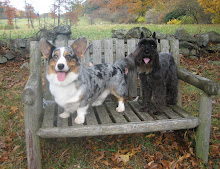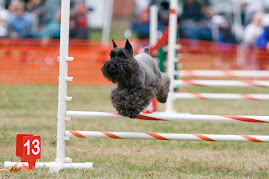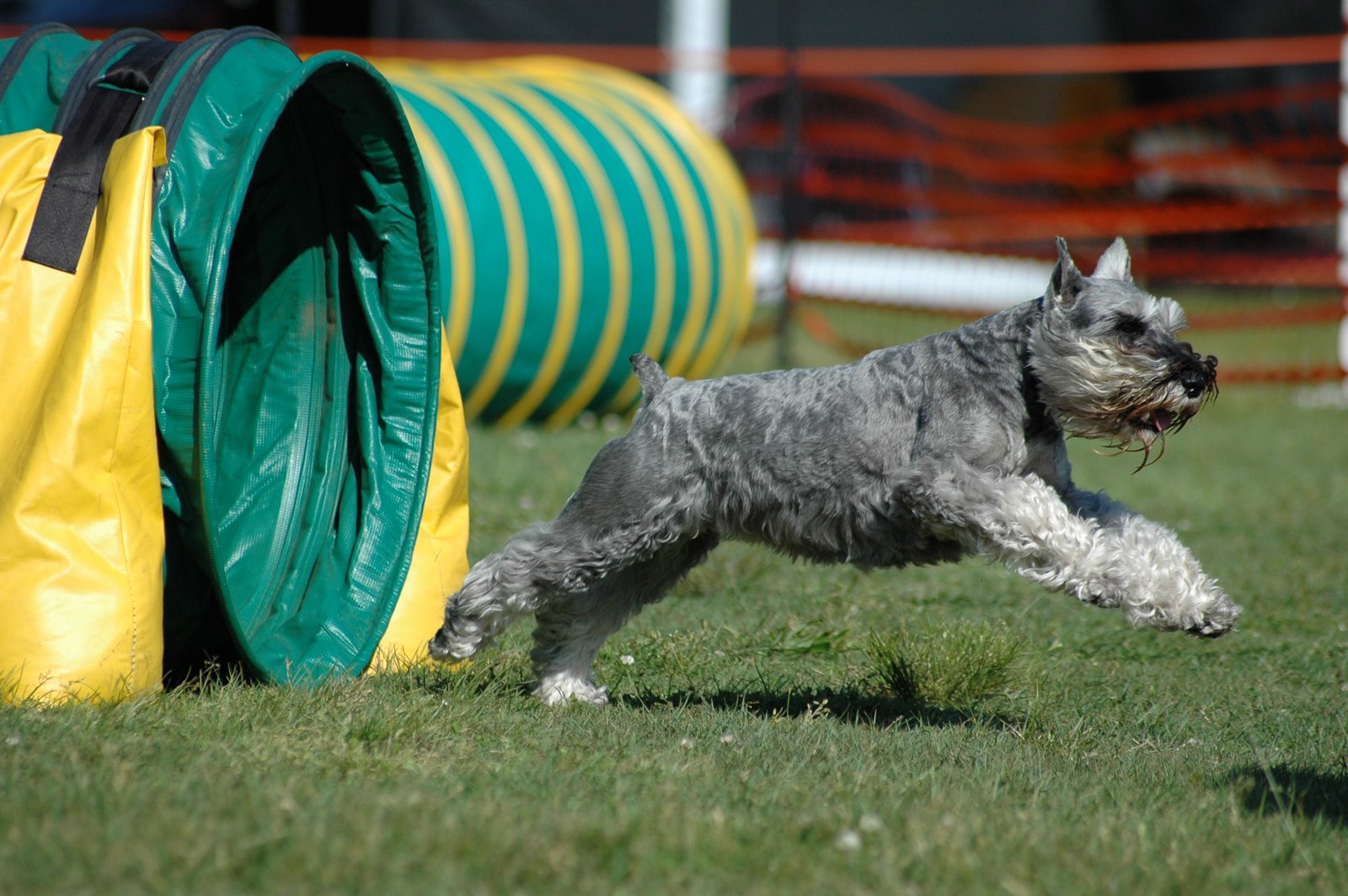This weekend Bug and I attended a 2 day herding seminar with Jan Wesen. We were supposed to be there for 3 days but I worried it might be too much physically for Bug after being off for so long and I dropped the third day. Note: Jan said in the future she is happy to do line work with me if I am concerned about Bug's physical well being and want to do all three days.
The seminar was supposed to be a duck intensive seminar but we did end up working sheep. We started off by introducing ourselves and explaining a bit about where we are and what we wanted from the seminar. When I explained what has been going on with Bug for the past year and that I was interested in ducks as a result Jan said, "Why? Ducks are harder on your dog." Now I audited a seminar last year where I swear she recommended ducks to someone because of their dog's physical health. Regardless. I have heard that ducks are harder from other people as well. All I want is to be able to work my dog without him being crippled when he is older. Jan suggested that I can work both I just need to be smart and make sure I stretch my dog, etc.
Friday we worked ducks twice and sheep once. The first time we worked we were really just working on keeping our dog on the fence and realizing that if the ducks moved all the way down the indoor arena (kind of cutting across it) versus turning back towards their safe spot our dog's nose and shoulders were coming off the wall. The second time Bug was feeling much more comfortable and we moved the ducks back and forth on one wall a lot more smoothly.
Jan had me help Bug move the ducks if he got stuck by wiggling my hand and actually moving them at one point. It really stuck with me when she said I need to help my dog now so that he realizes I will always help him if he needs it and as a result trust me to help him when he needs it. I love how different people say the same thing in different ways and for whatever reason one day it clicks for you.
Jan suggested we keep our dogs out while other people worked. Initially Bug whined a bit but I did grab his muzzle once and he did not whine again. He was really excellent. I kept him stapled (on a down with my foot near his collar) beside me for a large part of Friday and while he did rearrange fairly frequently he did not make a peep.
We ended the day with a bit of a melt-down on this human's part. I got stuck in a corner with my sheep and dog, did not understand at all where Jan wanted me to move and everyone got frustrated. My level of anxiety was high! The funny thing is after the melt-down Bug did some nice work. I feel like he likes sheep more than ducks, but I think a lot of it is exposure on both our parts so the level of comfort is higher.
I was nervous about Saturday after my melt-down, but it ended up being a REALLY great day. We did a lot of different exercises and Bug was really good and really engaged. And the human part of the partnership was more on the ball! We did driving and packed pen with both sheep and ducks, as well as many other exercises. We packed a LOT into Saturday which makes me sad we aren't there today.
Bug was slower jumping into the car Saturday morning and as the day went on he did wait for me to pick him up occasionally so I believe I made the right choice in doing only 2 days instead of 3.
Saturday someone was auditing who has never done herding before and she definitely felt like people where being harder on their dogs than she would be using the rattle paddles, etc. I remember the first herding seminar I audited. I felt the same way, I think. I think what people don't realize when you come from an all positive training forum, I didn't and I learned over time, is even though sport herding is not like having a farm where you need to move stock and sometimes the situations are really-really tense (like life or death tense), your dog (or you or the stock) can still get seriously injured. You and your dog need to have an understanding, trust each other, and work together. Some dogs are really hard headed and sometimes the methods you need to use can be a bit harsher. With Bug I use a stock stick. Anything more than a stock stick is WAY too much pressure for Bug. It's hard for me because I need to be very conscious of where my tool is and as a novice person I can be sloppy and exert too much pressure on my dog or hold pressure on him by accident.
It was really interesting to me to have this person asking questions and questioning the methods because it made me realize how my viewpoint has changed since I audited my first seminar in 2008. I have also watched every person I have worked with adjust their training styles to meet the dog's needs, so I am aware it isn't a cookie cutter formula - there is a reason for the tools and methods.
I learned a lot and I am looking forward to the next multi-day clinic I have the opportunity to attend. Attending multiple days really piles up the experiences and learning and I now see why it is the popular method in herding.
The seminar was supposed to be a duck intensive seminar but we did end up working sheep. We started off by introducing ourselves and explaining a bit about where we are and what we wanted from the seminar. When I explained what has been going on with Bug for the past year and that I was interested in ducks as a result Jan said, "Why? Ducks are harder on your dog." Now I audited a seminar last year where I swear she recommended ducks to someone because of their dog's physical health. Regardless. I have heard that ducks are harder from other people as well. All I want is to be able to work my dog without him being crippled when he is older. Jan suggested that I can work both I just need to be smart and make sure I stretch my dog, etc.
Friday we worked ducks twice and sheep once. The first time we worked we were really just working on keeping our dog on the fence and realizing that if the ducks moved all the way down the indoor arena (kind of cutting across it) versus turning back towards their safe spot our dog's nose and shoulders were coming off the wall. The second time Bug was feeling much more comfortable and we moved the ducks back and forth on one wall a lot more smoothly.
Jan had me help Bug move the ducks if he got stuck by wiggling my hand and actually moving them at one point. It really stuck with me when she said I need to help my dog now so that he realizes I will always help him if he needs it and as a result trust me to help him when he needs it. I love how different people say the same thing in different ways and for whatever reason one day it clicks for you.
Jan suggested we keep our dogs out while other people worked. Initially Bug whined a bit but I did grab his muzzle once and he did not whine again. He was really excellent. I kept him stapled (on a down with my foot near his collar) beside me for a large part of Friday and while he did rearrange fairly frequently he did not make a peep.
We ended the day with a bit of a melt-down on this human's part. I got stuck in a corner with my sheep and dog, did not understand at all where Jan wanted me to move and everyone got frustrated. My level of anxiety was high! The funny thing is after the melt-down Bug did some nice work. I feel like he likes sheep more than ducks, but I think a lot of it is exposure on both our parts so the level of comfort is higher.
I was nervous about Saturday after my melt-down, but it ended up being a REALLY great day. We did a lot of different exercises and Bug was really good and really engaged. And the human part of the partnership was more on the ball! We did driving and packed pen with both sheep and ducks, as well as many other exercises. We packed a LOT into Saturday which makes me sad we aren't there today.
Bug was slower jumping into the car Saturday morning and as the day went on he did wait for me to pick him up occasionally so I believe I made the right choice in doing only 2 days instead of 3.
Saturday someone was auditing who has never done herding before and she definitely felt like people where being harder on their dogs than she would be using the rattle paddles, etc. I remember the first herding seminar I audited. I felt the same way, I think. I think what people don't realize when you come from an all positive training forum, I didn't and I learned over time, is even though sport herding is not like having a farm where you need to move stock and sometimes the situations are really-really tense (like life or death tense), your dog (or you or the stock) can still get seriously injured. You and your dog need to have an understanding, trust each other, and work together. Some dogs are really hard headed and sometimes the methods you need to use can be a bit harsher. With Bug I use a stock stick. Anything more than a stock stick is WAY too much pressure for Bug. It's hard for me because I need to be very conscious of where my tool is and as a novice person I can be sloppy and exert too much pressure on my dog or hold pressure on him by accident.
It was really interesting to me to have this person asking questions and questioning the methods because it made me realize how my viewpoint has changed since I audited my first seminar in 2008. I have also watched every person I have worked with adjust their training styles to meet the dog's needs, so I am aware it isn't a cookie cutter formula - there is a reason for the tools and methods.
I learned a lot and I am looking forward to the next multi-day clinic I have the opportunity to attend. Attending multiple days really piles up the experiences and learning and I now see why it is the popular method in herding.






